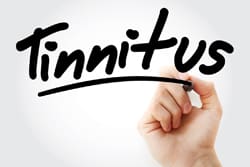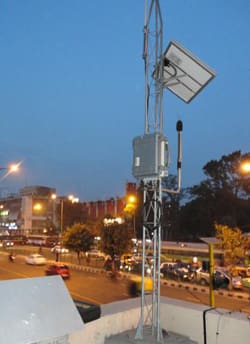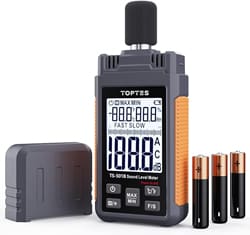
Noise awareness training is essential for organizations to protect employees from the harmful effects of excessive noise exposure in the workplace.
This specialized training educates workers on how to recognize hazardous noise levels, use protective equipment such as earplugs or earmuffs, and understand the importance of regular hearing tests.

By raising awareness about noise-related risks and promoting safe practices, companies can create a healthier and more productive work environment while ensuring compliance with occupational health and safety regulations.
Workplaces should hum with productivity, not reverberate with a cacophony of noise. Yet, across the UK, many work environments grapple with an invisible menace: excessive noise. It’s a threat that not only affects our well-being but also impacts our ability to thrive. That’s why Noise Awareness Training is so important.

Whilst most employers take care of the obvious safety risks, noise is frequently overlooked, yet poses a threat to health that far outweighs the risk from many other activities that are tightly controlled.
This is particularly relevant in the construction sector – all the plant and nearly all power tools in use generate noise and those above the permitted levels are more common than those below.
So, why should we take workplace noise seriously? Let’s break it down:
The Law
In the United Kingdom, the legislation that covers noise at work is The Control of Noise at Work Regulations 2005. These regulations are enforced by the Health & Safety Executive
Noise Limits
Noise is measured in Decibels and their are different levels at which action has to be taken.
- 80 dB(A): Imagine this as the “action level.” When noise hits this threshold, employers must step in. It’s like a friendly nudge to turn down the volume.
- 85 dB(A): Now things get serious. At this “exposure action value,” employers must provide hearing protection. Picture a bustling open-plan office or a construction site – that’s the buzz we’re talking about.
- 87 dB(A): This is the legal limit. Going above it, even with protection, is a big no-no. Think rock concerts – definitely not work-appropriate acoustics!
Key information – The increase in volume is logarithmic, rather than linear, so 85dB(A) is Five Times Greater than 80dB(A).
Beyond the Obvious – Sources Of Workplace Noise
- The Usual Suspects: We all know them – plant and machinery, blaring music, noisy printers, and chatty colleagues.
- The Sneaky Culprits: Did you know that air conditioning systems, fluorescent lights, and even keyboard clicks contribute to noise pollution? These seemingly innocuous sources add up, creating a low-level buzz that nibbles away at our concentration.
- The Architectural Echo Chamber: Open-plan offices, with their hard surfaces and lack of sound barriers, are notorious for amplifying noise. Even a hushed conversation can morph into a distracting echo.
The Downside of the Din
- Hearing Loss: This is the most obvious risk. Prolonged exposure to loud noise can cause permanent hearing damage, leaving us with a diminished ability to appreciate life’s symphony.
- Productivity Takes a Hit: Imagine trying to focus on a complex task while surrounded by a symphony of drills, hammering, and machinery. It’s like trying to read a novel during a rock concert – not exactly conducive to productivity. Excessive noise disrupts our concentration, leading to errors, missed details, and decreased efficiency.
- Stress and Well-Being: Noise isn’t just an annoyance; it’s a stressor. Our bodies react to constant noise by releasing stress hormones. We become constantly alert to potential danger. Over time, this can lead to fatigue, irritability, and even anxiety. A harmonious work environment, on the other hand, promotes well-being and keeps stress at bay.
- Communication Breakdown: Ever tried having a meaningful conversation on a busy site or in a bustling cafeteria? It’s a challenge! Workplace noise hampers effective communication. Misunderstandings occur, instructions get lost in the auditory chaos, and collaboration suffers. Clear communication is essential for safety and productivity. The expression “I can’t hear myself think!” has some truth to it.
- Legal Responsibilities: Employers have a legal duty to protect their staff from excessive noise exposure in the workplace. By conducting regular noise assessments, providing hearing protection equipment, and offering noise awareness training, employers can ensure compliance with health and safety regulations. Prioritizing the protection of employee’s hearing not only fosters a safe work environment but also reduces the risk of long-term health issues associated with noise-induced hearing loss.
Taking Action
- Engineering Controls: Let’s tackle noise at its source. Can we modify the machinery or equipment to reduce noise emissions? Perhaps invest in quieter tools or implement soundproofing measures. Engineers and designers play a crucial role here.
- Administrative Measures: Rotating workers away from noisy areas, scheduling noisy tasks during quieter hours, and creating designated quiet zones – these administrative strategies can make a significant difference.
- Personal Protective Equipment (PPE): When all else fails, don those ear defenders! High-quality earplugs or earmuffs shield our ears from excessive noise. Remember, PPE isn’t a fashion statement; it’s a shield against the workplace roar. And don’t forget – if you’re using Bluetooth-enabled ear defenders, don’t have your Spotify playlist blasting your ears – you’re rather missing the point!
Let’s Be Proactive
- Noise Awareness Training: Educate employees about noise hazards. Make noise awareness training a regular part of workplace safety programs. Teach them how to recognize risky noise levels and encourage reporting of any concerns. SuperSkills has this training available in an online format.
- Regular Checks: Monitor noise levels periodically. Are they creeping up? Investigate promptly and take corrective action. Remember, prevention is better than hearing loss cure.
- Checks On Individuals: Some occupations carry inherent risks associated with noise. In the early 20th Century, Tinnitus was commonly referred to as ‘Boilermaker’s Ear’ because people engaged in industrial process using rivets presented with the condition – or considerable hearing loss – so frequently. As the condition is progressive, regular hearing checks can identify a problem before the worker becomes disabled
How Can You Measure Noise In A Workplace?
Sound Level Meters
Probably most accurate and reliable method for measuring noise levels. These meters measure the sound pressure level in decibels (dB). They can be set to different weighting scales, such as A-weighting, which accounts for the sensitivity of the human ear to different frequencies.
Sound Level Meters (like many electronic goods these days) are remarkably cheap – the one pictured sells at less than £30.00
Noise Dosimeter
This small, wearable device measures the noise exposure of an individual worker over a period of time, typically a full work shift. It’s particularly useful for workers who move around throughout the day or are exposed to intermittent bursts of noise.
Again, Noise Dosimeters are very cheap and this one retails at less than £20.00
Smartphone Apps
Where would we be without Smartphone Apps?
Several smartphone apps can measure noise levels, although their accuracy may not be as good as professional equipment. However, they can be a handy tool for quick and easy noise checks, especially in smaller workplaces.
Environmental Noise Monitoring Systems
When smaller noise monitoring arrangements are inadequate, the whole area needs to be covered
For large workplaces over a long period, these systems consist of a network of permanently installed sensors that continuously monitor noise levels throughout the site.
They provide real-time data and can be used to identify areas with high noise levels and track noise reduction efforts over time.

How Often Should Noise Levels Be Monitored?
In a noisy work environment, it’s essential to regularly monitor noise levels to protect workers’ hearing and well-being. Here are some guidelines:
- Every Two Years: Generally, you should check whether a review is needed at least every two years. This ensures that noise exposure remains within safe limits and allows for adjustments if necessary.
- Initial Health Surveillance: When a worker is exposed to noise levels regularly, health surveillance (hearing checks) should be conducted when the person is recruited.
- Annually for the First Two Years: Initially, perform hearing checks annually for the first two years of employment.
- Three-Year Intervals: After the initial period, conduct hearing checks at three-year intervals.
- More Frequent Checks if Needed: If any hearing issues are detected or if the risk of hearing damage is high, consider more frequent checks.
Adapt to Changes – Noise Levels Can Change Over Time
Monitor Noise Levels Regularly: If there are significant changes in work patterns or equipment, repeat noise measurements.
Ensure the measurements reflect the actual amount of noise the employee is exposed to over the working day.
Here are some additional tips for measuring noise in the workplace
- Take measurements at different times of the day and in different areas of the workplace to get a representative picture of the noise exposure.
- Be aware of any background noise that could affect your readings.
- If you’re using a smartphone app, calibrate it with a professional sound level meter before using it.
- Record your findings and keep track of any trends over time.
By following these tips, you can accurately measure noise levels in your workplace and take steps to protect your employees from the harmful effects of noise exposure.
Conclusion: Next time you’re on a construction site or navigating the office buzz, remember that noise isn’t just background chatter. It’s a health issue, a productivity challenge, and a safety concern. Let’s turn down the volume, protect our ears, and create harmonious workplaces where productivity thrives.


